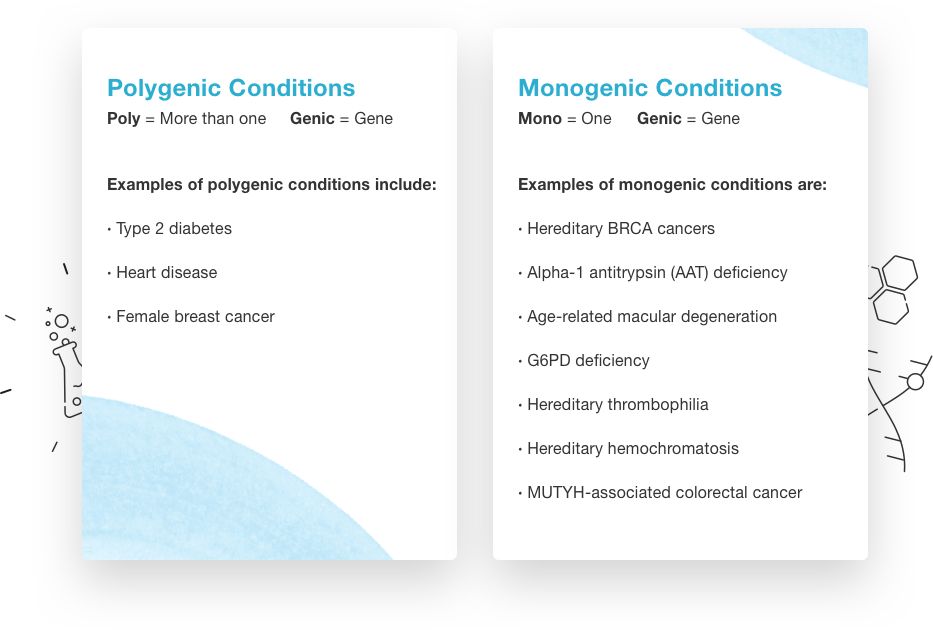
Ever wonder if heart disease has some genetic component? What about type 2 diabetes? Or breast cancer? There is a new technique that aims to combine DNA testing with mathematical modeling to answer that very question on a personal level. It is called a polygenic risk score (PRS). But what exactly is a polygenic risk score?
By definition, “poly-genic” means “more than one gene.” And unlike many definitions in health, this one accurately describes its meaning. Some health conditions are monogenic, meaning they are caused by a pathogenic or disease-causing variant in a single gene. For example, cystic fibrosis is a monogenic condition that is caused by a single mutation in the CFTR gene. While there are hundreds of monogenic conditions, the total number of people affected by any one of these conditions is fairly small. Common traits, on the other hand, like obesity and high blood pressure, and diseases like heart disease and diabetes, affect a significant number of the world’s population. The predisposition for these traits and diseases is actually controlled by a combination of many genes. They are, by that definition, polygenic. To provide an accurate risk assessment for these conditions, we need to look at the individual risks a person has at many locations across the genome and combine them. The cumulative result of those combined risks is called a polygenic risk score.
How is a PRS calculated?
To determine a polygenic risk score, it is first necessary to assess your combined risk across hundreds, thousands, or even millions of variants. Each one of these variants typically makes a small contribution to your overall risk for the condition. To determine this overall risk, we need to model how to sum the contribution of all of these variants together.
The mathematical model used to calculate a PRS takes into account two things — the variants found in your DNA and the impact each one of those variants has on the likelihood you will develop the disease.
Knowing what variants to test comes from extensive review of what are called genome-wide association studies, GWAS (pronounced “G-wahs”) for short. GWAS studies include thousands to millions of people, usually from a specific ethnic population, some of whom have the disease or complex trait in question. Millions of variants across their genomes are tested, and the results of those with the disease are compared to those without to see how their variants differ. This creates a picture of variants that are more common in people with the disease and tells us what variants to look for in the DNA sample submitted from a Health kit.
Each variant has a unique contribution to the overall disease risk. This is called the “effect size.” The mathematical model takes this effect size into consideration, giving variants with larger effect sizes more weight than those with lesser effect sizes. So, when a sample is submitted, it is tested for the variants identified in the GWAS studies, and the results are input into the model. The model calculates the effect size at each variant and assesses the corresponding risk. The PRS is the sum of your individual risks at each of those variants.
Considerations with PRS
Currently, PRS reports are only available to those of European descent. That is because the vast majority of the GWAS studies that have been done looked mostly at people of that ethnic background. Since there could be differences in the variants that cause disease between people of different ethnic groups, GWAS studies are needed in each major ethnic group before PRS can be reliably calculated for people of non-European ancestry. Fortunately, large scale research efforts around the world are ongoing to try and address this problem. As this data is released, PRS reports will become available to those of additional ethnicities.
The other thing to consider with PRS is that it is most valuable when viewed as part of a holistic picture of health. Conditions like heart disease and obesity are largely influenced by lifestyle factors like diet, exercise, and BMI that you can control. The PRS is a guide that helps identify people who may not have known that they have a genetic risk, allowing them and their healthcare providers to be more proactive in their care.





